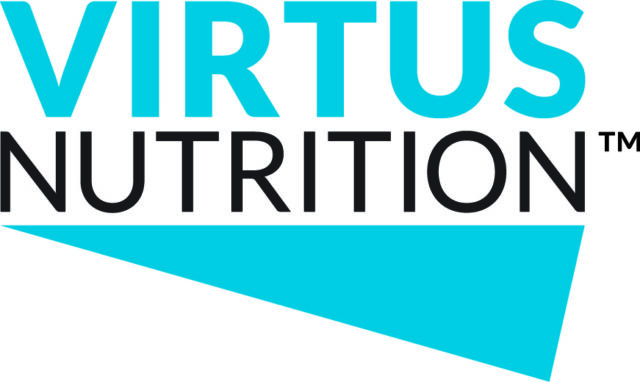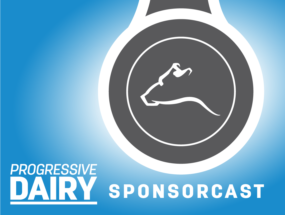Do you believe a 5% butterfat for Holstein herds or 6% Jersey herds is attainable? Why not? The way we think about something drives how we address the circumstances. Establish your goal and write it down. Make a poster and hang it in the barn where everybody can see it. If individual cows are capable of it, then there is little reason to think it isn’t possible in a herd. This article will address several tangible factors related to butterfat, but it all begins with mindset.
What we feed to optimize butterfat
All we have to do is balance the ration to maximize fat, right? Regarding the number of variables involved in ration formulation, few diets are ever truly balanced. Consider the word “optimized” instead. Let’s look at several key nutrients that must be optimized for maximum butterfat production.
Fiber
The foundation of any good ration is fiber. Without adequate fiber, we cannot maintain a healthy rumen. To maximize profits we need to be careful not to overfeed fiber, which may inhibit intake and production. Higher fiber or long particles don’t necessarily equate to higher butterfat. The goal is to hit the sweet spot where we maximize intake with minimal eating time. This allows more time for ruminating, preferably while lying down.
Nutritionists use a variety of measures to ensure good rumen function, including NDF (neutral detergent fiber) and peNDF (physically effective NDF). I like to look at the amount of NDF that comes from forage. If the NDF from forage is around 21%, we should have enough for good rumen function. The peNDF should also be close to 21%, as most peNDF comes from forage. To calculate peNDF, the TMR is shaken through the Penn State Particle Separator. The percentage of particles remaining on the top three sieves is multiplied by the total NDF in the diet. Diets with adequate peNDF are often between 18% and 21%.
A recent visit to the Miner Institute gave my colleagues and I new perspectives on particle size. We learned that regardless of the length of material a cow consumes, she chews it down to half-an-inch or less before the feed enters the rumen. This dispels some myths about the necessity of feeding long hay to cows.
Starch
Much of the energy in a cow’s ration is derived from starch, which predominantly comes from corn silage and corn grain. Many associate low butterfat with feeding too much starch. Don’t be afraid of starch; instead, use it to your advantage. We often successfully balance one-group TMRs between 25% and 32%. Significant reasons to feed depend on grain processing and peNDF available in the ration.
One of my clients with a rolling herd average (RHA) fat greater than 1,350 pounds feeds a diet containing 28 pounds of corn silage (dry matter) with a dietary starch of 30.5%. The forage NDF is 21.27%, and the peNDF is about 20%. The herd is achieving a 4.6% fat with excellent herd health and reproduction.
Fat
Fat plays a critical role in high-producing dairy herds. Total fat can be categorized into saturated and unsaturated fats. Too much unsaturated fat can upset normal rumen function and cause low butterfat. Most of the butterfat problems I encounter are tied to an imbalance of fats in the diet.
In September of 2023, one Pennsylvania farmer struggled with a low butterfat of 3.4%. Because of their proximity to an ethanol plant, they bought wet distillers grain below market prices. Their ration contained 6 pounds of wet distillers on a dry matter basis. Manipulating starch, fiber and minerals didn’t seem to help improve butterfat percentage. Last year, I convinced the dairy producer to discontinue the distillers due to the high unsaturated fat content. Instead, we added 5.5 pounds of dry matter of roasted, high oleic beans. Other ration nutrients remained relatively the same. We saw an immediate response within a few weeks. The butterfat went to 4% and is maintaining. Body condition and heat observation have also improved.
There has been increasing interest in supplementing specific fatty acids, such as palmitic acid (C:16). Many nutritionists and producers that feed high levels of palm fat usually see an immediate butterfat response. However, after long periods, cows may lose body condition if they do not receive adequate energy from other sources, and reproduction can be compromised. Because palm fat directly transfers to the mammary gland, a higher butterfat test could mask acidosis. Butterfat alone is not the best indicator of herd health; therefore, palm fats should be used wisely. Consequently, cows require a combination of fatty acids (Table 1).

Minerals
Sodium bicarbonate gets the lion’s share of attention when we talk about minerals related to butterfat and is typically fed at 0.9% to 1% of the diet. In addition to contributing to rumen pH buffering, it increases DCAD (dietary cation-anion difference). DCAD is not only important for dry cows but also in lactating diets where metabolic buffering is thought to increase milkfat production.
How we manage
Feeding and push-ups
TMR is delivered to the bunks before the sun rises at most farms. The process is repeated 10 to 12 hours later. The question: Is this often enough? The data indicates that cows respond best if fed multiple times throughout the day – measuring rumen pH is an example.
Ideally, rumen pH will fall between 6.2 and 7. However, averages can be misleading. You wouldn't be comfortable if one foot is in boiling water and the other in a bucket of ice. Cows may fall below 6.2 and, at times, reach the 5.5 range. This is often the result of the slug feeding effect; constant access to feed helps prevent large meals and reduces time spent below pH of 6.
Our group often conducts camera studies. It is not uncommon to find cows out of feed or unable to reach the feed for six to eight hours in the evening. We will see cows come up to the bunk, stand around and then walk away. The occurrence represents a missed meal. Cows always need feed available. We should stimulate the cow by feeding or pushing up feed at least six times per day. Having feed available always minimizes slug feeding and reduces the time she needs to spend at the bunk, allowing for more lying and rumination time.
Cow comfort
Stall design, lack of bedding material and overcrowding are the leading causes of a cow not lying down enough. Ideally, cows should lie down 12 hours per day or more. I worked with a herd that milked cows in three locations, all of which received the same ration. One of the farms was overcrowded by 50%, and the butterfat was routinely five-tenths of a percent lower than the other two farms.
Are your cows ruminating enough? Rumination is critical for saliva production, which significantly contributes to rumen buffering. Many farms now utilize cow monitors – besides the obvious identification and activity monitoring value, we can track rumination and resting times. The healthy cow ruminates between 500 and 600 minutes daily. Ration adjustments have an immediate impact on ruminations.
How we breed
The power of genetics comes into play here, and I learned this lesson early on. In April of 1998, Ju-Vindale Avant-Garde Mona was sold as Lot No. 1 at the “Joys of Ju-Vindale” sale, and I became the owner. Mona completed her third lactation with a butterfat of 4.6%. In 312 days, she made 1,166 pounds of fat. Mona is an example of the “model cow” because she had type, high production and longevity. In her fifth lactation, Mona produced 41,341 pounds of milk and 1,995 pounds of fat in 365 days. Her butterfat average was 4.82%, and that was 25 years ago.
With all the reproduction technology available, there are no excuses. Breeding for components should be a priority. Genetics is a relatively small percentage compared to all the farm expenses and offers great returns over time.
If butterfat is depressed or you’re not progressing, it may not be your fault, but it is certainly your responsibility. Ask yourself objectively: "Am I the cause or the cure for the challenges I’m faced with?" Make your own list of things you can do to improve butterfat. Discuss the list with your team of trusted advisers and stakeholders. Strive to check as many boxes as possible, and remember your success begins with mindset.











